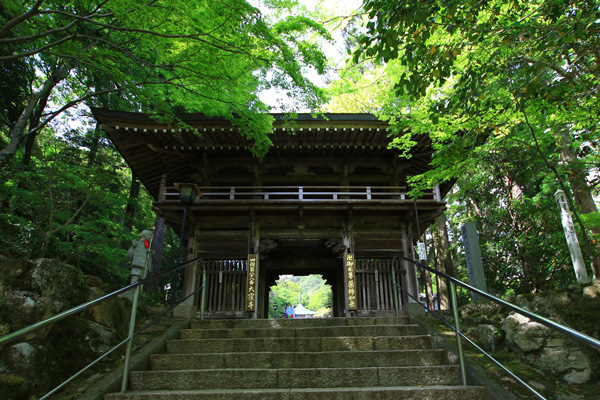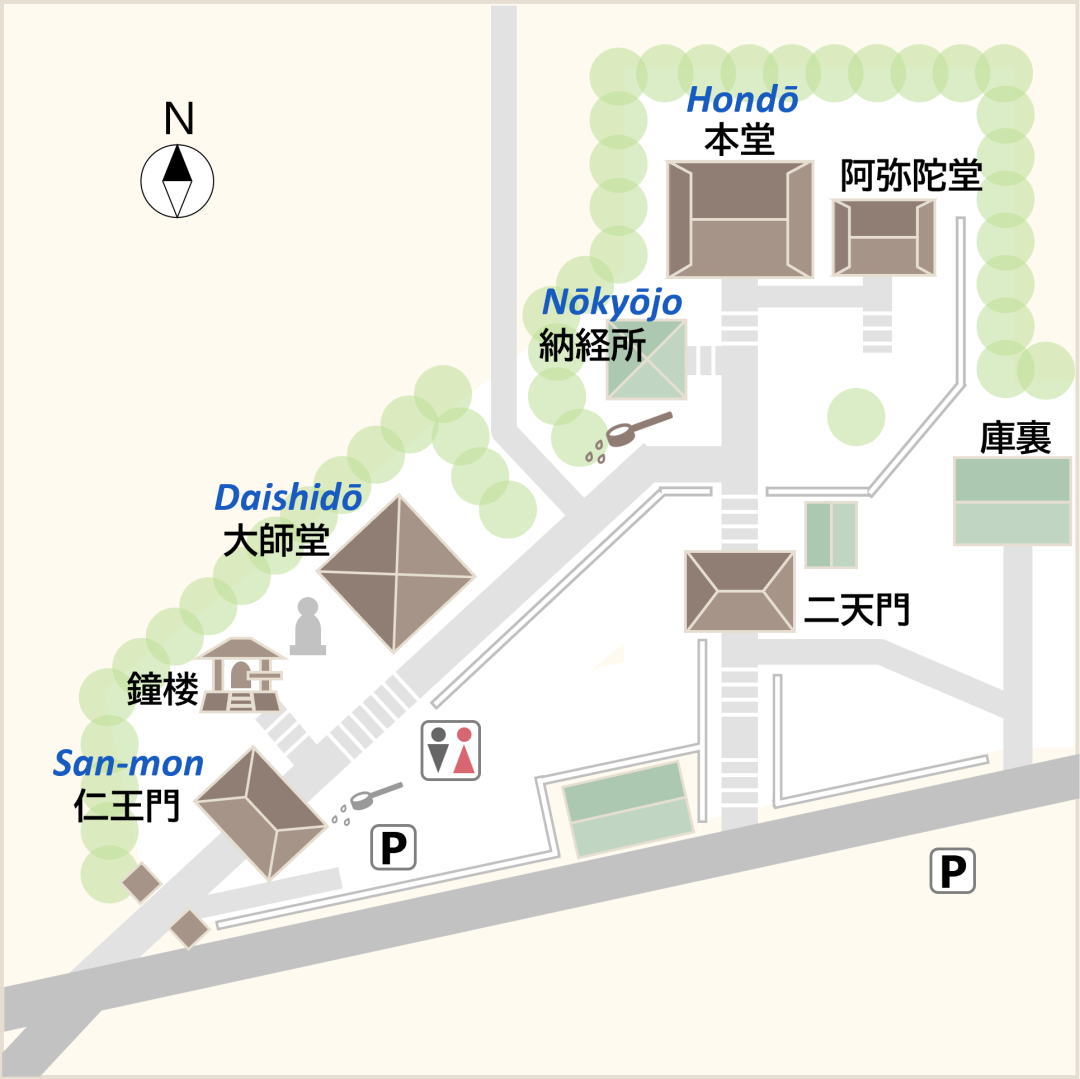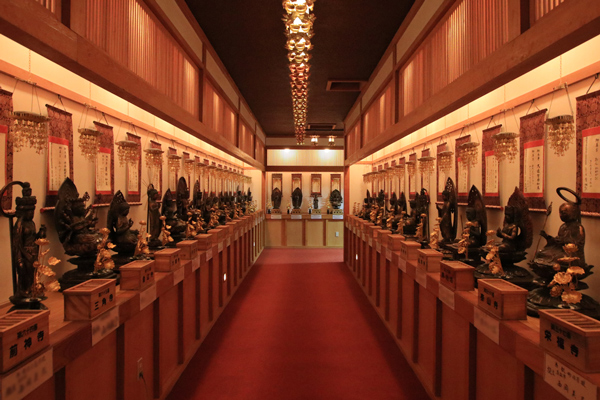The Shikoku Pilgrimage Temple Guide
Temple 88, Ōkuboji

Precinct map

History of the temple
Ōkuboji is the last temple of the Shikoku Pilgrimage. It is located on the eastern side of Mt. Yahazu (782 meters elevation) near the border of Kagawa and Tokushima Prefectures. According to legend, when Gyoki visited this site in 717, he had a vision and built a hermitage to practice asceticism. In 815, when Kobo Daishi returned from China, he practiced Buddhist asceticism and built halls and pagodas around the rock cave where the present inner temple is located. He also carved a life-size, seated statue of Yakushi Nyorai (Medicine Buddha) as the principal image of the temple. Then he dedicated a Buddhist staff he had been given by his Buddhist Master from China, Keika Ajari. That staff had been passed on from India to China and finally to Japan. He named the temple Ōkuboji and designated it as the 88th temple of the Shikoku Pilgrimage.
The inner temple is on Mt. Nyoraisan, west of the Hondo. It is said that when Kobo Daishi gave blessings with his dokko, a single-pointed vajra, to offer water to the principal image, fresh water gushed out. Many visitors take this water together with medicine to receive benefits.
Women were allowed to enter the temple from an early period, and it flourished as a women's Koyasan. At one time there were more than 100 buildings. However, the temple suffered repeated hardships, including a fire during a war in the Tensho era (1573-1592) and another fire in 1900. Nevertheless, thanks to the patronage of the Takamatsu feudal lords and the efforts of successive head priests, the temple flourished again. It continues to be a sacred site for the completion of the pilgrimage. Walking sticks and other items that have been used during the pilgrimage are sometimes deposited in the Hojodo next to the Daishido. They are burnt at a saito gomaku, an outdoor fire ritual, in spring and summer every year.
Highlights
Underground beneath the Daishido
There is an underground passage below the Daishido where visitors can step on sand from the grounds of the 88 temples. This allows those who have difficulty going on a full pilgrimage due to time or physical conditions to experience the Shikoku pilgrimage. The Daishido is open to the public.
Hondo
The Hondo comprises the Reido, the Chuden, and the Okudono, which is a multi-storied pagoda.
The principal image
The principal image is hidden from public view. Statues of Yakushi Nyorai usually show him holding a pot of medicine in his left hand, but the statue at Ōkuboji holds a conch shell. This may be because he can blow away people's worries and mental fog with this conch shell.
Daishido
The Daishido is located at the top of some stone steps. There is a place downstairs where visitors can step on sand from all 88 pilgrimage temples. There are small principal images of the 88 temples along the passage. It is said that if you go around, you will receive the same blessings as if you had visited the temples.

Annual Events
| 12th of every month (except August) | Honzon Gomaku (Principal Image Goma Fire Ritual) |
| 28th of every month | Fudo Gomaku (Immovable Wisdom King Goma Fire Ritual) |
| March 21 (Vernal Equinox Day) and August 11 | Saito Gomaku (Outdoor Goma Fire Ritual) |
| September 23 | Dosha Kaji Hoyo (Soil Blessing Ritual) |
| December 22 (Winter Solstice) | Hoshimatsuri Hoyo (Star Ritual for Warding off Evil) |
Details
Names: Iōzan Henjōkōin Ōkuboji
Denomination: Shingon sect
Principal Image: Yakushi Nyorai
Founder: Gyoki
Founded: 717
Access
Access
Address: 96, Tawa-Kanewari, Sanuki City, Kagawa 769-2306
Phone: 0879-56-2278
Parking: Available (free of charge)
Lodging: None
Official website: None
